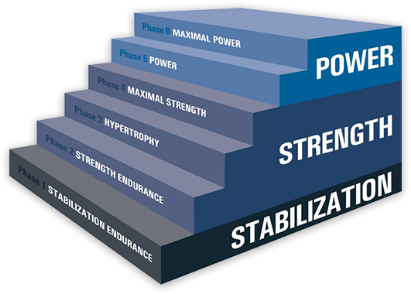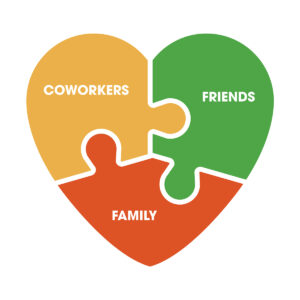
Gymini exclusively utilizes proprietary Optimal Performance Training (OPT) model developed by the National Academy of Sports Medicine (NASM). NASM designed the Optimal Performance Training (OPT) model as a planned, systematic, and periodized training program to simultaneously improve all physical abilities, such as flexibility, muscular and aerobic endurance, core stabilization, balance, muscular strength, coordination, and power. It is an evidence-based model, meaning it has been tested and validated both in a laboratory setting and in the field; proving itself to be extremely successful in helping clients and athletes from diverse populations reduce their body fat, increase lean muscle mass, and improve athletic performance and overall health. This modular design allows for a custom fit adaptations for all age, gender and life-stage considerations such as youth, seniors, natal, and menopause.
Book an Introductory 30-minute Session Today
No commitment required and the fee is fully applied to the full purchase of any weekly training program. Your introductory session includes a goal analysis, body composition analysis, overhead squat assessment, corrective exercise analysis, and sample programming based on those results.
Corrective Exercise

The Corrective Exercise Continuum is the systematic process of identifying a neuromusculoskeletal dysfunction, developing a plan of action, and implementing an integrated corrective strategy. It is a sophisticated and straightforward implementation of assessment and exercise program design processes. The continuum includes four primary phases The first phase is the Inhibit phase using inhibitory techniques to reduce tension or decrease activity of overactive neuromyofascial tissues in the body. The second phase is the Lengthen phase using lengthening techniques to increase the extensibility and range of motion of neuromyofascial tissues in the body. The third phase is the Activate phase using activation techniques to reeducate or increase activation of underactive tissues as identified during the assessment process. The fourth and final phase is the Integrate phase using integration techniques to retrain the collective synergistic function of all muscles through functionally progressive exercise using integrated dynamic movements.
Performance Enhancement

Step into Phase 6 and take your game to the next level and reach your peak performance potential with tailored cutting-edge strength and conditioning training programming for running, bodybuilding, Olympic lifting, golf, basketball, and MMA.
Most strength and conditioning programs focus on isolated, uniplanar exercises to maximize absolute strength gains and muscular development. However, the Human Movement System evolved using all three planes of motion as an interdependent unit, and the central nervous system naturally optimizes the selection of muscle synergies to perform integrated movement patterns. Thus, isolated training does little to improve overall athletic performance.
In contrast, training that exploits integrated, functional movement patterns targets synergistic muscles to regulate isometric, concentric, and eccentric force while dynamically stabilizing the entire Human Movement System in all three planes of motion. This creates maximal motor unit recruitment and facilitates a greater overall training response. The athlete who applies an integrated, functional approach to training will develop high levels of dynamic flexibility, core strength, neuromuscular control, power, speed/agility/quickness, and functional strength. In addition, an athlete may develop similar, or even greater, levels of hypertrophy following improved motor unit recruitment.
Group Personal Training
Enhance exercise enjoyment, strengthen interpersonal bonds, and save money by training with a partner or a group. Take advantage of individualized integrated training for smaller groups of 2-4 and customized functional fitness circuits for larger groups. No matter the size and composition of your team, you’ll get tailored programming for any combination of a couples, families, besties, friends, coworkers, crews, posses, classmates, teammates, employees, or boot camps.

- Financial: Partaking in group personal training rather than one-on-one training allows the participants to share the cost of the coach. With a lowered cost per session, individuals who did not find personal training to be cost-effective will have the opportunity to participate in a guided exercise program.
- Social Engagement: By nature, humans are social creatures, and the ability to train and work together enables individuals to form connections and relationships from the shared experience that increases camaraderie and support. This social experience also enhances motivational levels through the team approach or by fostering a sense of competition and, more importantly, support and approval from one another.
- Accountability: Attending training sessions that involve smaller numbers of individuals will help participants maintain interest and increase participation. Ultimately, as participants feel an obligation to both the coach and their peers, motivation and overall adherence will increase.





